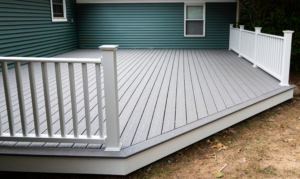The Ultimate Defense Against Fleas & Ticks: Repelz Electromagnetic Flea & Tick Tag and Flea Destroyer
As devoted pet owners, we all understand the constant battle against fleas  and ticks that relentlessly torment our beloved furry companions. These persistent pests not only cause discomfort and incessant itching but also pose a serious threat by transmitting harmful diseases. However, fear not, for there are now revolutionary and natural solutions available to combat this issue. Allow us to introduce you to the powerful duo of Repelz Electromagnetic Flea & Tick Tag and Flea Destroyer beneficial nematodes. Together, they offer a chemical-free and 100% safe solution to shield your pets from these troublesome parasites.
and ticks that relentlessly torment our beloved furry companions. These persistent pests not only cause discomfort and incessant itching but also pose a serious threat by transmitting harmful diseases. However, fear not, for there are now revolutionary and natural solutions available to combat this issue. Allow us to introduce you to the powerful duo of Repelz Electromagnetic Flea & Tick Tag and Flea Destroyer beneficial nematodes. Together, they offer a chemical-free and 100% safe solution to shield your pets from these troublesome parasites.
Defeating Pests – The Dynamic Duo
The combination of Repelz Electromagnetic Flea & Tick Tag and Flea Destroyer is the ultimate 1-2 punch against fleas, ticks, and other parasites that lurk in your yard or surroundings. This powerful tandem not only eliminates existing infestations but also prevents further attacks on your pets, granting them complete protection whenever they venture outdoors.
 Repelz Electromagnetic Flea and Tick Tag: Shielding Your Pet from Pests
Repelz Electromagnetic Flea and Tick Tag: Shielding Your Pet from Pests
Cutting-Edge Innovation in Flea & Tick Prevention: At the forefront of lifetime flea and tick prevention, Repelz Electromagnetic Flea & Tick Tag stands as a game-changer in the battle against these pesky intruders. Unlike conventional flea collars and spot treatments laden with harsh chemicals and pesticides, this innovative device offers a safe and sustainable alternative.
Harnessing Electromagnetic Power: The Repelz Electromagnetic Flea & Tick Tag utilizes low-frequency electromagnetic waves, creating an invisible shield around your pet. This lightweight and compact tag emits scalar waves that synchronize with your pet’s natural electromagnetic frequency, forming a bio-resonant barrier. The resulting scalar waves disrupt the sensory organs of fleas, ticks, and other flying pests, compelling them to stay away from your pet.
Safe & Easy to Use: Ensuring the utmost safety for your furry friends, the tag is entirely safe for both dogs and cats. Attaching it to any collar or harness is a breeze, and with its water-resistant and durable build, it provides continuous protection, even during outdoor adventures.
Long-Lasting Protection: The Repelz tag is designed to last a lifetime and comes with a reassuring 10-year replacement warranty. To maintain the synchronized frequency, the tag must remainattached to your pet. As your pet stays shielded from fleas and ticks, the Flea Destroyer Beneficial Nematodes take care of eradicating the flea population in your yard.
Flea Destroyer Beneficial Nematodes: Vanquishing Fleas at the Source
 The Power ofBeneficial Nematodes: Flea Destroyer Beneficial Nematodes are tiny, yet formidable allies in the battle against fleas. These naturally o
The Power ofBeneficial Nematodes: Flea Destroyer Beneficial Nematodes are tiny, yet formidable allies in the battle against fleas. These naturally o
ccurring microscopic worms prey on flea larvae and pupae, effectively disrupting their life cycle and eliminating them before they can mature into biting adults. Their presence in your yard ensures that the flea population is kept under control, reducing the risk of re-infestation.
Environmental & Pet-Friendly Solution: A distinct advantage of using Beneficial Nematodes is that they are entirely safe for pets, humans, and other beneficial insects in your yard. They do not harm earthworms or ladybugs, making them an eco-friendly choice for pest control.
Simple Application: Applying Flea Destroyer Beneficial Nematodes is a straightforward process. They can be easily dispersed in your yard using a sprayer or a watering can. Once released, they seek out flea larvae and pupae, ensuring that the next generation of fleas are effectively eliminated. 
Safeguarding Your Pets and Home
When it comes to protecting your pets from the relentless onslaught of fleas and ticks, the combination of the Repelz Electromagnetic Flea & Tick Tag and Flea Destroyer Beneficial Nematodes are a match made in heaven. By utilizing the natural power of low-frequency electromagnetic waves and the protection of beneficial nematodes, this dynamic duo delivers an unparalleled defense against pests.
With the Repelz tag safeguarding your pet and the Flea Destroyer nematodes eliminating fleas at the source, you can bid farewell to constant worry and itching. Instead, embrace the joy of spending quality time with your furry companions, both indoors and outdoors, knowing that they are protected from the harmful parasites that once plagued them.
Make the wise choice today and equip your pets with the ultimate defense against fleas and ticks. Provide them with the comfort and security they deserve, while also creating a pest-free environment that keeps your entire family safe and happy. Embrace the power of Repelz and Flea Destroyer and bid farewell to flea and tick woes once and for all!










